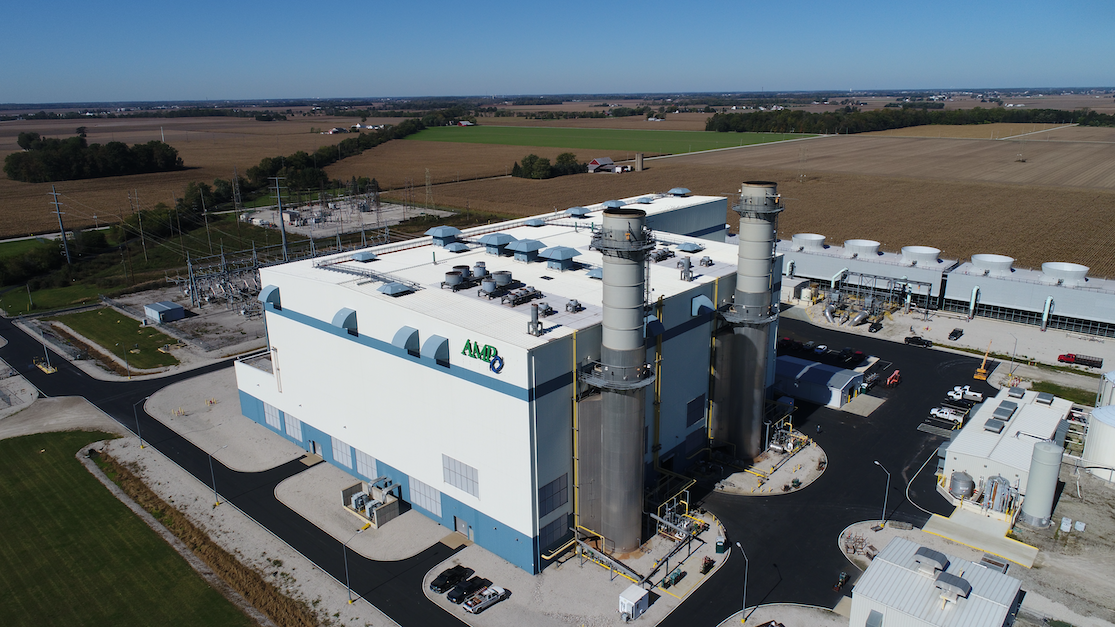Power Supply
AMP maintains a diverse portfolio of power supply resources to meet the needs of its Member systems. AMP’s portfolio includes a combination of AMP and Member-owned generation with long-term contracts for power purchases as well as some seasonal and spot market purchases.


Power Supply
AMP conducts regular long-term power supply studies and develops load forecasts to ensure it has ample generation or purchased power resources available to meet the growing needs of its Member communities.
AMP personnel assist Member electric systems in assessing and filling the power supply needs of their communities, using a variety of resources to achieve the most economical and reliable blend of energy sources.
Generation Management
AMP currently operates, maintains and dispatches approximately 1,461 megawatts (MW) of generation. Of this generation, approximately 1,238 MW are owned by AMP and approximately 223 MW of generation is owned by Members through joint ventures.
All of this generation is operated in the most effective, efficient way possible. AMP is constantly evaluating such things as fuel acquisition, emissions reduction, maintenance improvements and economic dispatch to achieve the highest efficiencies and effectiveness for this generation.
If you have questions regarding generation management, please contact William Sandell, Vice President of Generation Operations and Development, at 614.540.6382 or [email protected].
AMP Energy Control Center
The AMP Energy Control Center operates around the clock, 365 days a year, and is the nerve center for AMP’s data monitoring and power supply acquisition efforts.
The Energy Control Center manages the full load requirements of over 100 Members.
Since its inception as a one-person operation in 1985, the Energy Control Center has always worked to minimize costs for participating communities through various methods.
The Energy Control Center operates on a smart-meter satellite supervisory control and data acquisition (SCADA) system, enabling AMP to accurately track Member loads and generation in real time. It also meets all requirements set by the North American Electric Reliability Corporation and handles the needs of AMP’s distributed generation and additional participating communities.
For more information about the Energy Control Center, please contact Jerry Willman, Vice President of Energy Marketing, at 614.540.1111 or [email protected].
SCADA
AMP’s SCADA system collects real-time data from meters and remote terminal units from over 400 sites across AMP’s footprint, which includes generation projects.
SCADA is used by the AMP Energy Control Center to monitor remote sites, start and stop remote generation, and store information in a data historian, which then feeds reports used for billing, load forecasting, monitoring, and alerting.
AMP’s SCADA system communicates with remote field devices using several types of communication technologies including high speed fiber, satellite and cellular. These communications enable the SCADA system to read data points several times a minute, or near real-time.
AMP’s SCADA team manages and provides 24/7 support for the AMP SCADA system and connected field devices. They also work with Members and other entities to provide onsite support at remote sites.
For more information on SCADA, please contact Jared Price, Vice President of Information Technology and Chief Information Officer, at 614.540.1111 or [email protected].
Transmission Affairs
AMP staff follows both PJM Interconnection, LLC, and the Midcontinent Independent System Operator tariff and business rules development. AMP is active in the stakeholder meetings of both regional transmission organizations (RTOs) to better advise Members on generation and power supply decisions.
Beyond the RTO stakeholder process, AMP follows and participates in FERC proceedings.
Using the knowledge and contacts gained in both the RTO and FERC proceedings, AMP is able to help its Members navigate the tariffs and business rules for generation and tie-line interconnections.
For more information, please contact Steve Lieberman, Vice President of Transmission and Regulatory Affairs, at 614.519.9168 or [email protected].